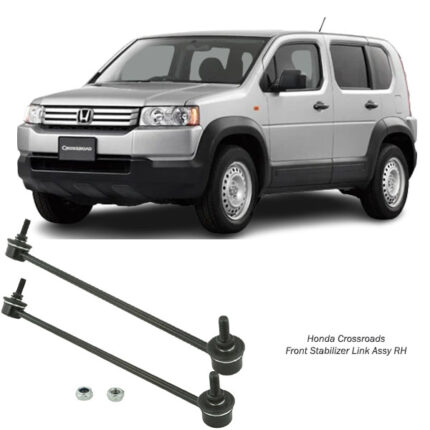-6%
Get Subaru Forester/S12 Legacy B14 Legacy/Legacy Outback B14 Rear Upper Arm LH
The rear upper arm, also known as the upper control arm or rear upper control arm, is a crucial component of a vehicle’s suspension system. It plays a significant role in maintaining the proper alignment and stability of the rear wheels. Here’s a deeper dive into its definition and function:
Definition:
- The rear upper arm is a structural component typically found in vehicles with independent rear suspension systems. It is designed to connect the rear axle or hub assembly to the vehicle’s chassis or body frame.
- The arm is usually shaped like an “L” or “U” and is mounted vertically or diagonally, depending on the vehicle’s suspension design.
Benefits;
1. Suspension Control and Stability:
- Improved Handling: The rear upper arm helps to control the movement and positioning of the rear axle, contributing to improved handling and stability, especially during cornering and maneuvering.
- Reduced Body Roll: By maintaining proper alignment and control of the rear axle, the rear upper arm helps to minimize body roll and sway, enhancing overall vehicle stability and driver confidence.
2. Enhanced Comfort and Ride Quality:
- Smoothing Out Bumps: The rear upper arm aids in absorbing and distributing the impact of road imperfections and bumps, leading to a smoother and more comfortable ride for occupants.
- Reduced Vibrations: By stabilizing the rear axle and minimizing unnecessary movement, the rear upper arm helps to reduce vibrations and harshness felt in the vehicle’s cabin, enhancing passenger comfort.
3. Tire Wear Reduction:
- Even Tire Wear: Proper alignment and control of the rear axle, facilitated by the rear upper arm, help to ensure even tire wear across the rear tires, maximizing tire longevity and reducing the need for premature replacements.
- Prevention of Suspension Misalignment: The rear upper arm helps to prevent suspension components from becoming misaligned, which can lead to uneven tire wear and compromised handling.
4. Improved Traction and Stability:
- Enhanced Traction: By optimizing the positioning of the rear axle, the rear upper arm improves traction and grip, especially during acceleration and cornering, resulting in better overall vehicle stability and control.
- Reduced Wheel Hop: The rear upper arm helps to minimize wheel hop and axle tramp, allowing for smoother and more controlled power delivery to the rear wheels, particularly during hard acceleration.
5. Durability and Longevity:
- Increased Component Longevity: The rear upper arm is designed to withstand the stresses and forces encountered during normal driving conditions, contributing to the durability and longevity of the suspension system.
- Reduced Maintenance Costs: By ensuring proper alignment and control of the rear axle, the rear upper arm helps to minimize wear and tear on other suspension components, reducing the need for frequent maintenance and repairs.
Signs a car needs a new one;
1. Unusual Noises:
- Clunking or Banging Noises: Worn or damaged rear upper arms can produce clunking or banging noises, especially when driving over bumps, potholes, or rough roads. These noises may become more pronounced during acceleration, deceleration, or steering maneuvers.
2. Excessive Body Roll:
- Increased Body Roll: A failing rear upper arm can lead to increased body roll during cornering or sudden maneuvers. You may notice the vehicle feels less stable and exhibits more lateral movement than usual.
3. Poor Handling and Stability:
- Reduced Handling: Handling characteristics may become compromised, with the vehicle feeling less responsive and more difficult to control, especially during high-speed maneuvers or emergency situations.
- Unstable Steering: The steering may feel loose or imprecise, with decreased feedback and a lack of confidence-inspiring control.
4. Uneven Tire Wear:
- Uneven Tire Wear: Worn rear upper arms can lead to uneven tire wear patterns. Inspect the tires for signs of abnormal wear, such as cupping or scalloping.
5. Visual Inspection:
- Visible Damage or Wear: Inspect the rear upper arms visually for signs of damage, such as bending, cracking, or corrosion. Pay close attention to the condition of the bushings, ball joints, and mounting points.
- Loose or Missing Hardware: Check for loose or missing nuts, bolts, or bushings securing the rear upper arm to the vehicle’s chassis and suspension components. Loose hardware can contribute to excessive play and noise.
6. Suspension Sag or Sagging Ride Height:
- Uneven Ride Height: A noticeable sagging or uneven ride height on one side of the vehicle may indicate a problem with the rear upper arm. This occurs as the arm loses its ability to maintain proper suspension geometry and control body movement.
Follow us on Facebook for more parts.



